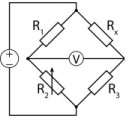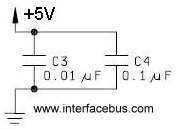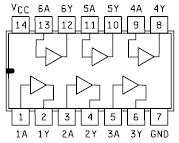Engineering Dictionary
"A"
"B"
"C",
"D",
"E",
"F",
"G",
"H",
"I",
"J",
"K",
"L",
"M",
"N",
"O",
"P",
"Q",
"R",
"S",
"T",
"U",
"V",
"W",
"X",
"Y",
"Z"
"B" to
"Bas", "Bat" to
"Bim", "Bin" to
"Bn",
"Bo" to
"Bq", "Br" to "Buq", "Bur" to
"Bz"
Braid. A fibrous or metallic group of filaments
interwoven to form a protective covering over one or more wires.
Also refer to the Cable Armor Definition.
Braid [Fiber]: An essential part of many fiber-optic cable
designs, consisting of a layer of woven yarn. Note: In the case
of single-fiber loose-buffered or two-fiber "zip-cord"
loose-buffered fiber-optic cables, the braid is situated between
the buffer tube and jacket. In the case of cables having multiple
buffer tubes, the braid is usually situated between the inner
jacket and outer jacket. Loosely, an unwoven parallel bundle of
yarn situated around the tight buffer of a single-fiber or
two-fiber "zip-cord" fiber-optic cable. Notes: The
braid serves to add tensile strength to the cable. The braid may
also be anchored to an optical connector or splice organizer
assembly to secure the end of the cable. The braid is often of an
aramid yarn.
Braided Wire. A wire composed of some number of smaller
wires which are woven together. For more detail refer to Wire Braid
used with Cable.
Branch. An individual current path in a parallel circuit.
Breadboard. A board used to test, develop or evaluate a
circuits functionality A graphic of a solderless breadboard is
shown in the right side-bar. The companion site shows an enlarged
view of a Solderless
Breadboard. A Breadboard or protoboard could be any style of
circuit board used to fabricate a prototype circuit to include a
Printed Circuit Board [PCB] with pre-drilled holes for
components, or an array of solder pads for surface mount devices
in addition to a Solderless Breadboard.
Break. An interruption in a circuit. In a switch, the
number of breaks refers to the number of points at which the
switch opens the circuit; for example, single break and double
break, which are the number of pairs of separated contacts the
switch introduces into each circuit it opens.
Break-before-Make. Switch contacts which interrupt one
circuit before establishing the previous one.
Breakdown. The phenomenon occurring in a reverse-biased
semiconductor diode. The start of the phenomenon is a transition
from a high dynamic resistance to one of substantially lower
dynamic resistance.
Breakdown. A disruptive discharge through insulation,
involving a sudden and large increase in current through the
insulation because of complete failure under electrostatic
stress, also called puncture.
Breakdown Voltage. The voltage at which an insulator or
dielectric ruptures, or at which ionization and conduction take
place in a gas or vapor. The breakdown voltage is the maximum
instantaneous voltage, including repetitive and non-repetitive
transients, which can be applied across a junction in the reverse
direction without an external means (circuit) of limiting the
current. It is also the instantaneous value of reverse voltage at
which a transition commences from a region of high small-signal
impedance to a region of substantially lower small-signal
impedance.
Breakout. The point at which the conductors of a cable are
separated to complete a circuit, as in a Break-Out-Board.
Breakout Board. See BOB card.
Breakout Cable. A cable that translates one form of
connector [at one end] into a number of other connector styles
[at the far end], normally the cables are translated using
separate jacketed cables.
Brick. A small encapsulated power supply, usually mounted
on a printed wiring board.
|
Bridge Circuit. A circuit used for electrical measurements. A Wheatstone Bridge is shown as a example of one of a number of different bridge styles. The Wheatstone Bridge is used to measure an unknown resistance, Rx. One branch of the bridge needs to be adjustable, in this case R2. |
 |
Bridge-T Network. A three element impedance network in the shape of a 'T', that uses a forth impedance element in parallel with the two elements forming the top of the 'T'. Also refer to Passive Filter Definition.
|
Bridge Rectifier. A bridge circuit consisting of 4 separate diodes which function as a full wave rectifier. Bridge Rectifier Circuit Description. A 4 diode bridge produced using either 4 discrete diodes, or a single package containing all four diodes [see the graphic to the right]. |
Rectifier |
Brightness Control. The name given to the potentiometer
used to vary the brightness of a monitor. Also refer to the
Potentiometer Definition,
within the dictionary of resistor terms.
British Thermal Unit. [Btu] The amount of heat energy
required to raise the temperature of one pound of water from 60
degrees F to 61 degrees F at one atmosphere pressure.
Broadside Array. An array in which the direction of
maximum radiation is perpendicular to the plane containing the
elements. Refer to the Dictionary of
Antenna Terms.
Brushes. Sliding contacts, usually carbon, that make
electrical connection to the rotating part of a motor or
generator. The contact point between the rotating and stationary
part of a machine.
Buck Converter. See Buck Regulator.
Buck Regulator. A buck converter is a step-down DC to DC
converter. Also refer to DC-to-DC Voltage
Converters, related page Voltage
Regulator Manufacturers.
Buffer. An IC that isolates one circuit from another, as
in a 7404 or 74244 Octal Buffer, [TTL
vendors]. A voltage amplifier used between the oscillator and
power amplifier. An allocation of memory space for temporary
storage. A component or circuit that compensates for a difference
in data transfer rates and data processing rates [a FIFO for
example].
Buffer Amplifier. An amplifier that isolates one circuit
from another. A Buffer, for example decreases the loading effect
on an oscillator by reducing the interaction between the load and
the oscillator. A Transistor
Buffer circuit.
Buffered Delay Line. An analog delay line with a buffered
output. A Delay Line that is compatible with digital logic by
buffering the input and output so normal digital logic may
interface with the I/O. A delay line that uses a buffer to
compensate for the signal lose as it passed through the delay
circuit. Related terms; Tapped Delay Line,
UnTapped Delay
Line.

Buffered Delay Line
Buffer Memory. A faster memory placed between two circuits that is used to make a larger system memory appear faster, as in cache memory. A FIFO or other similar memory element used to buffer or even out the read-write speed between to circuits. A dual-port memory.
Buffer Storage. Same as buffer memory.
Bug. A fault or defect, normally considered to be designed into the circuit.
Built-In Test Equipment. [BITE] A permanently mounted device that is used expressly for testing an equipment or system. Also refer to System Test Acronyms.
|
Bulb. A light bulb. The shape of the glass covering a lamp filament. A glass bulb takes on many shapes, including the standard shape used by a flash light bulb. |

Bulb |
Bulkhead Connector. An electrical fitting with
electrical contacts designed to be mounted on a bulkhead,
chassis, panel, wall, or the like. A bulkhead connector allows
electrical continuity of a cable assembly through bulkhead or the
like. A bulkhead connector may have insulating elements, a hood
or shell, screws and means for polarizing and aligning.
Bumpon Small plastic stick-on bumps used to protect a
surface. Sometime used as feet for the bottom of a surface, or
table-top chassis or case. Normally a Bumpons has a pressure
sensitive adhesive backing so that it may be attached to another
surface. A Bumpon may be made of additional materials other than
Polyurethane, and could be made of almost any color including
transparent.
Buncher Cavity. The input resonant cavity in a
conventional klystron oscillator.
Buncher Grid. In a velocity-modulated tube, the grid that
concentrates the electrons in the electron beam into bunches.
Bundle. A group of individual wires or cables tied
together or held with in a single jacket.












